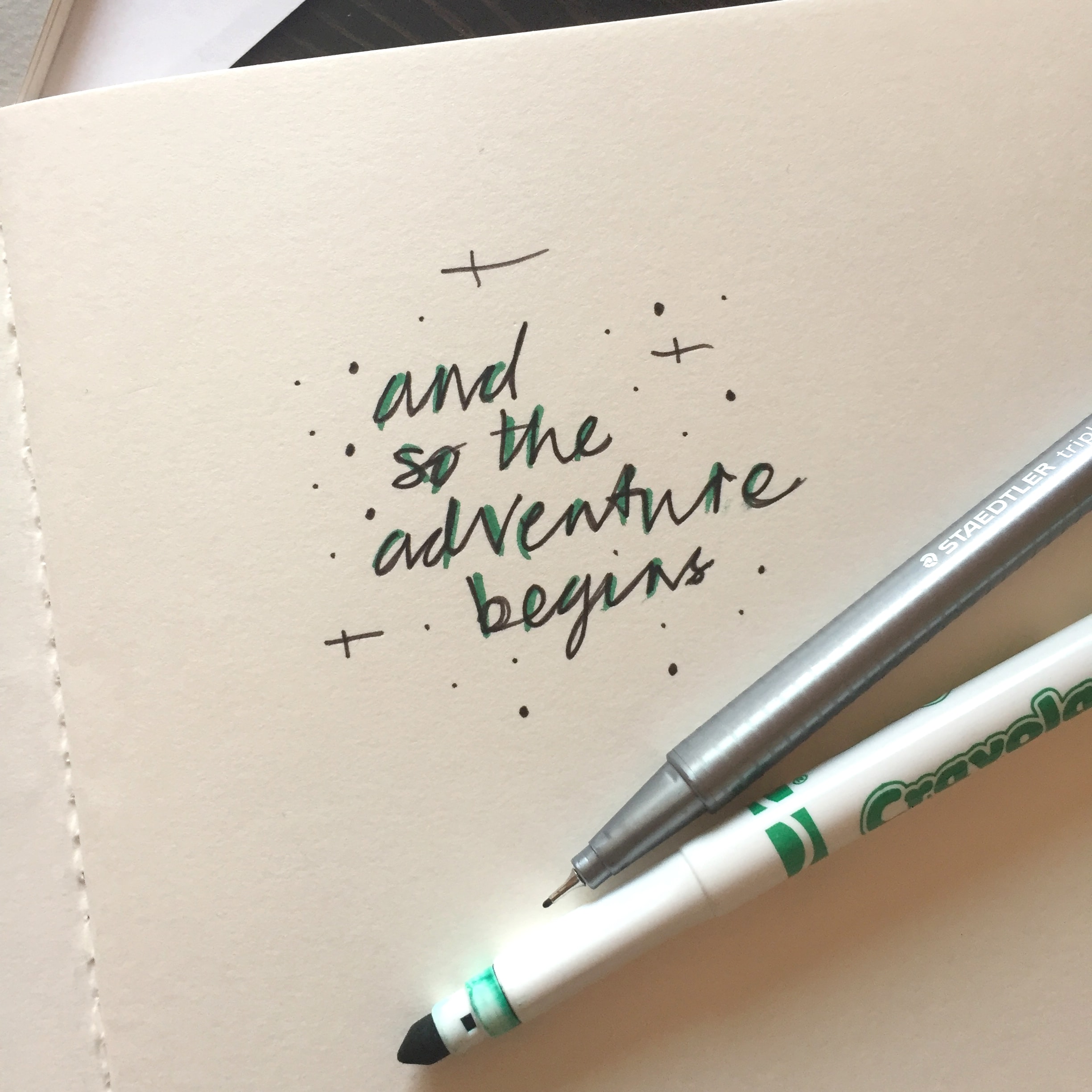Whenever I’m having writer’s block and feel stuck, I try to go about the act of writing in a more tactile way. I call this ‘climbing down a rung’, which helps with unlocking—as well as unblocking—my creativity. Let me explain.
My default writing instruments, just like any other millennial I presume, are almost all virtual now: the word processors and writing apps that ethereally exist in my notebook or smartphone, all of which depend on typing—well, for the most part. So if I’m trying to write a page and nothing comes to mind, I try to forgo the convenience (and other perks) of typing altogether. Instead, I opt for old-school pen(cil) and paper, and handwrite and/or outright doodle. Once you unblock your creativity, it means you’re helping at the same time to unlock your creativity as well.
From typing to handwriting or—leaving the abstraction of alphabet behind altogether—doodling, I’m making the process of (thinking through) writing more concrete for myself: I’m climbing down a rung, or two, on the abstraction ladder! I used to not know why it worked, but it did! Each mark—of a letter or doodled shape—makes a new tiny path upon the field that I’m figuratively cultivating with my fingers. Before long, a stream of ideas flows, more streams criss-cross and new rivers meet, and, lo and behold, an estuary opens into a sea of words!

Why Touch Stimulates Creativity
No surprise that the award-winning novelist Robert Stone once said, “The pen compels lucidity.” And I’ve heard numerous other writers, old and contemporary, muse on changing writing tools as one solution to writer’s block. But there’s already some research to back up the experience of all these writers as to what has worked for them all along. The main takeaways are that handwriting helps us:
- Train our brain by “increas[ing] neural activity”
- Sharpen our brain and learn better
- Seize the moment of writing and enjoy it for its own sake
Other studies shine a light on how the magic happens, showing, for instance, that handwriting improves memory or “doodles can help you pay better attention” and “improve your concentration,” amongst other things. For a short history of doodling and how it stimulates creativity, you should also watch this TEDTalk. All this seems to boil down to one phenomenologically obvious fact: motor activity affects the mind, which is investigated in a field known as embodied cognitive science.
So what happens, scientifically speaking, when I make the act of writing more tactile and, as a result, in closer harmony with my body? The story I imagine goes like this:
When I type, my fingertips are only touching surfaces which have no direct relation to the letter appearing on the screen, but it seems that when I handwrite the same letter, I’m tracing the straight lines, curves, and dots with the entirety of certain parts of my body (hand, arm, their muscles, my nervous system, &c). Therefore, this embodied performance builds muscle memory, and its effect on my mind—whether or not it is entirely realised in and contained within my brain—cannot be isolated from the rest of my body. When I doodle, the tactility of the process as a consequence of my increased performance is cranked up by at least a notch if not more.
For me personally, handwriting-cum-doodling (because when I do one, I almost always end up doing the other as well so I think of both as bound up with each other) has a close relation to free writing, which is itself correlated with creativity.
Again, my story for the relevance of these processes for me is as follows: when I type, I’m limited by some kind of tunnel vision that keeps my creative powers from wandering around in an open-ended way and exploring other possible, non-linear paths forward; the keystrokes are the most immediate things I see before myself. Handwriting-cum-doodling, however, liberates me from that glass ceiling that the keyboard imposes on my thoughts, and I can break free and let my imagination through not only language as an abstract entity but language as a multi-sensory realisation—i.e. shapes, patterns, colours, even our pareidolic tendencies—fly and soar until it can have a bird’s-eye view of all that lies miles below.

5 Practical Steps to Unlock Your Creativity
So how can you utilise both handwriting and doodling to unlock your creativity? Here are 5 practical steps that could help:
- First off, there’s no need to change your default writing habits. If typing works for you most of the time, great! It does for me. And there’s so much that comes with composing with word processors, apps, and so forth, so you should continue making most of them as long as they work for you.
- If you feel you’re stuck, however, remember climbing down a rung is one solution amongst many that could work for you. So why not give it a try!
- Take a step back—this can be as simple as walking away from your desktop/laptop or taking a longer break—and then switch to pen(cil) and paper—or stylus and tablet alternatively 1.
- Free write in generously spaced lines, that is, leave enough white space between and round what you write down.
- Be spontaneous and uninhibited with your drafts and use the white space accordingly: print, write in cursive, draw, doodle, connect, circle, cross out, criss-cross, and so on and so forth. Remember: this is only a working draft, and the main purpose behind the switch is to feel freed up and fired up!
Personally, it’s usually at this point that I feel relaxed, invigorated, and above all rejuvenated by all that fooling around on paper! The tension from writer’s block has given way to a sea of words and marks on paper—and of opportunity and ideas, possibly a road map for my project and a way out of the impasse I had reached only hours before.
![You are currently viewing Unlock Your Creativity with 5 Practical Steps Like That! [+Infographic]](https://avidemia.com/wp-content/uploads/featured0002.jpg)
![Read more about the article 9 Simple Steps to Boost Your Productivity in a Jiffy [+Infographic]](https://avidemia.com/wp-content/uploads/featured001.jpeg)

![Read more about the article How to Protect Vision Health in 9 Tested Ways [+Infographic]](https://avidemia.com/wp-content/uploads/photo-1494869042583-f6c911f04b4c.jpeg)